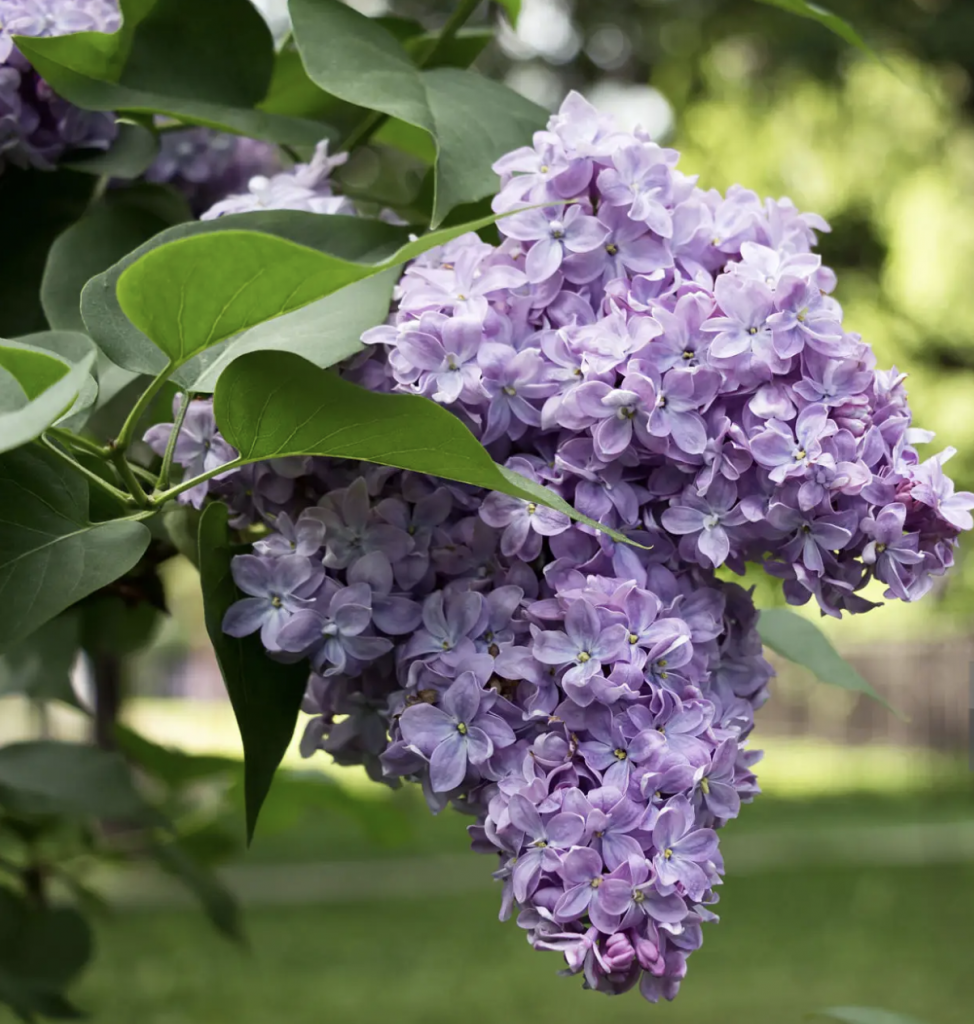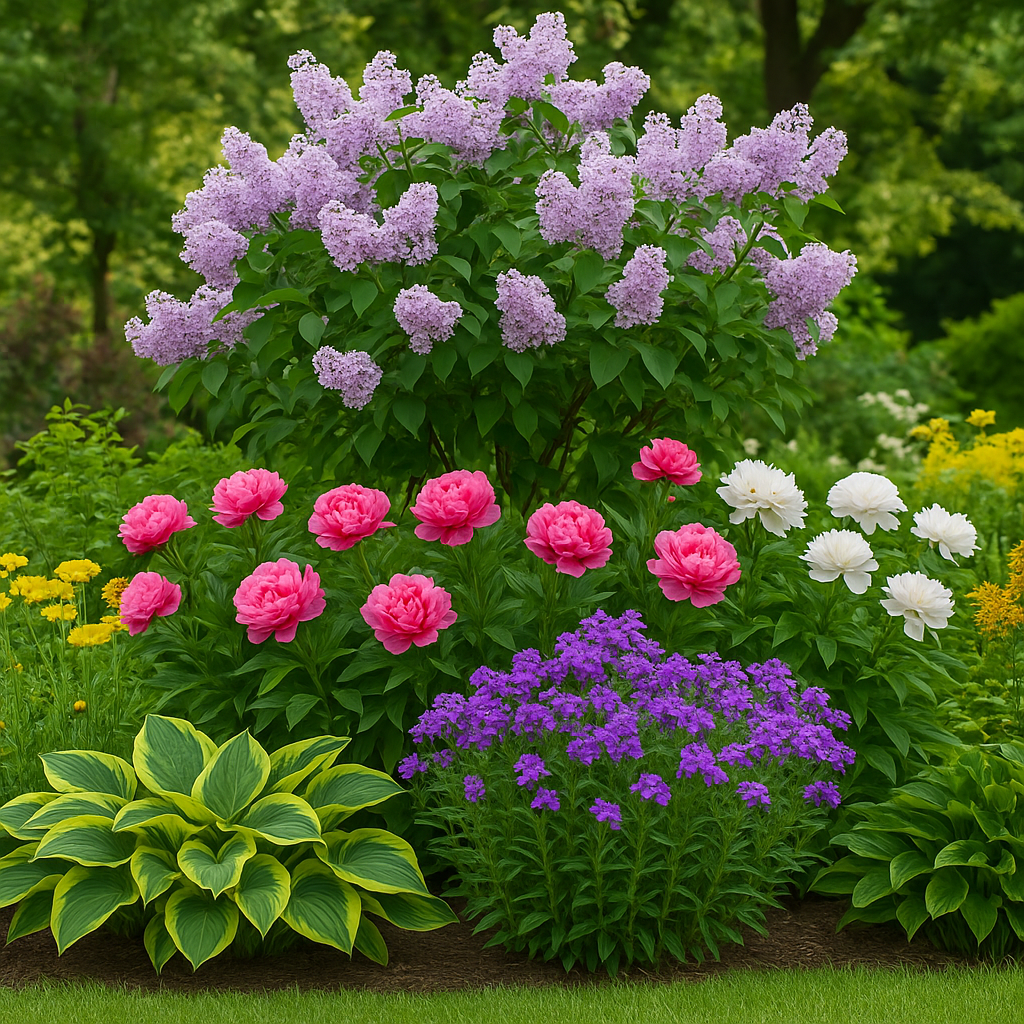Lilacs (Syringa vulgaris) are cherished for their delightful fragrance and stunning clusters of purple, pink, or white flowers that herald the arrival of spring. Known for their vibrant color and aromatic blossoms, lilacs are a favorite among gardeners who want to add a touch of elegance to their landscape. Whether you're planting them as a specimen shrub, hedge, or part of a mixed border, lilacs offer long-lasting beauty with minimal care. In this comprehensive guide, we'll cover everything you need to know about planting, caring for, and propagating lilacs, with expert tips to help you grow the best lilacs in your garden.
What are Lilacs?
Lilacs are deciduous shrubs that belong to the olive family (Oleaceae). They are native to Europe and Asia and are renowned for their clusters of tubular flowers that bloom in early spring. Lilacs are available in a variety of colors, including shades of purple, pink, and white. Known for their sweet fragrance, lilacs not only beautify gardens but also attract pollinators like bees and butterflies. They are perfect for creating fragrant garden corners, hedges, or focal points.
Key Features of Lilacs:
- Flower Color: Purple, Pink, White (varieties available in each)
- Foliage Color: Green in spring and summer, turning yellow in fall
- Height: 5 to 15 feet (depending on variety)
- Width: 5 to 12 feet
- Blooming Season: Spring (late April to early May)
- Hardiness Zones: 3-7
- Special Features: Fragrant flowers, attracts pollinators, low-maintenance

Where to Plant Lilacs
Lilacs thrive in full sun to partial shade. They require a sunny spot to bloom at their best, as they need at least 6 hours of direct sunlight each day for optimal flower production. They are relatively tolerant of different soil types but prefer well-draining soil with a neutral to slightly alkaline pH.
Ideal Planting Locations:
- Mixed Borders: Lilacs make a beautiful addition to mixed flower borders, where they can add height and color.
- Specimen Shrub: Plant lilacs as a specimen shrub or focal point in the garden, where they can showcase their stunning flowers.
- Hedges and Privacy Screens: Lilacs can be used to create fragrant hedges that provide privacy and add beauty to your garden.
Expert Tip: Ensure that the planting area has good air circulation to help prevent fungal diseases, which lilacs are prone to in humid conditions.
How to Plant Lilacs
Planting lilacs correctly will help ensure they thrive and produce abundant blooms.
- Best Time to Plant: The best time to plant lilacs is in early spring or fall when the weather is cool, and the plant has time to establish strong roots before the extreme temperatures of summer or winter.
- Planting Hole: Dig a hole that is twice the size of the root ball and slightly shallower. Lilacs do not like their roots sitting in wet soil, so ensure the root ball sits level with the surrounding soil.
- Soil: Lilacs prefer well-draining soil. While they tolerate a variety of soil types, they do best in soil that is slightly alkaline. If you have acidic soil, add lime to raise the pH.
- Mulching: After planting, apply a 2-inch layer of mulch around the base of the plant to help retain moisture, suppress weeds, and regulate soil temperature.
Expert Tip: Water the lilac regularly after planting to ensure the roots establish well, but be cautious of overwatering as lilacs do not like soggy soil.
Lilac Care: Keeping Your Plant Thriving
Lilacs are relatively low-maintenance but require some care to ensure they remain healthy and continue to bloom year after year.
Light Requirements:
Lilacs need full sun to bloom profusely. The more sunlight they receive, the better their flowers will be. While they can tolerate light shade, their blooms may be fewer and less fragrant.
Watering:
Lilacs are fairly drought-tolerant once established, but they need consistent moisture during the first few months after planting to establish strong roots. Afterward, water deeply during dry periods, but avoid overwatering as lilacs do not like their roots to sit in water.
Expert Tip: Water deeply once a week during dry spells, allowing the soil to dry out between waterings to prevent root rot.
Soil and Fertilizing:
Lilacs grow best in slightly alkaline, well-drained soil. They are relatively tolerant of different soil types but dislike wet, poorly-drained soils. In the first few years, you can fertilize lilacs with a balanced fertilizer in early spring to promote growth. However, after that, lilacs generally do not require much fertilizing, as they are fairly low-maintenance.
Expert Tip: Avoid over-fertilizing, as this can encourage excessive foliage growth at the expense of blooms. A light application of compost or organic matter is usually enough to nourish your lilac.
Pruning Lilacs
Pruning lilacs is important for maintaining their shape, improving air circulation, and encouraging more blooms. Here's how to prune lilacs properly:
- When to Prune: Prune lilacs immediately after flowering. Since lilacs bloom on old wood (the previous year's growth), pruning after the flowers fade ensures that you do not remove next year's flower buds.
- How to Prune: Remove dead, damaged, or crossing branches to improve airflow and reduce disease risk. If necessary, you can cut back old stems to the base of the plant to rejuvenate the shrub and encourage fresh, healthy growth.
Expert Tip: If you need to shape your lilac, do so right after flowering to avoid cutting off the next season's flower buds.
Pests and Problems
Lilacs are generally pest-resistant but can occasionally face a few issues, especially when grown in humid conditions.
Common Problems:
- Powdery Mildew: This fungal disease is common in humid climates and can cause a white, powdery coating on the leaves. To prevent it, ensure good air circulation around the plant and avoid overhead watering.
- Lilac Borer: The larvae of this pest can bore into the stems of lilacs, weakening the plant. To control them, prune out infested wood and dispose of it.
Expert Tip: To prevent powdery mildew, ensure good air circulation and avoid overcrowding your lilacs with other plants.
Propagation: How to Grow New Lilacs
Lilacs are best propagated through cuttings or by budding onto rootstock. Here's how you can propagate lilacs:
- Taking Cuttings: In early summer, take 6-8 inch cuttings of healthy, non-flowering stems. Remove the lower leaves, leaving just a few leaves at the top.
- Rooting the Cuttings: Dip the cut ends in rooting hormone, then place them in a pot filled with well-draining soil. Keep the pot in a warm, shaded area until roots form.
- Budding: Lilacs can also be propagated by budding onto a hardy rootstock, which can be done in late summer or early fall.
Expert Tip: Lilac cuttings require patience as they root slowly. Using a humidity dome or plastic cover will increase the chances of success.
Types of Lilacs
There are many varieties of lilacs, each offering unique flower colors, shapes, and growth habits. Here are some popular varieties:
- ‘Common Lilac’ (Syringa vulgaris): The classic lilac with fragrant purple flowers. Grows 8-12 feet tall. Zones 3-7.
- ‘Miss Kim’: A compact variety with fragrant, pale purple flowers and excellent fall color. Grows 5-6 feet tall. Zones 3-7.
- ‘Bloomerang’: A reblooming variety that offers two blooms, one in spring and another in summer. Grows 5-6 feet tall. Zones 3-7.
- ‘White Lilac’ (Syringa vulgaris ‘Alba’): A classic variety with pure white flowers and a strong fragrance. Grows 8-12 feet tall. Zones 3-7.

Companion Plants for Lilacs
Pair lilacs with other plants that complement their fragrance and provide contrast in your garden:
- Peonies: These classic spring bloomers pair beautifully with lilacs, creating a fragrant and colorful display.
- Phlox: Plant phlox near lilacs for a burst of color that extends the bloom season.
- Hostas: These shade-loving plants can provide a striking contrast to lilacs, which prefer more sunlight.

FAQ: Common Lilac Questions
Why isn’t my lilac blooming?
Lilacs need full sun to bloom profusely. Ensure that the plant receives at least 6 hours of direct sunlight per day. Additionally, avoid pruning in the spring, as you may accidentally cut off next year’s flower buds.
How do I rejuvenate an overgrown lilac?
To rejuvenate an old lilac, cut back about one-third of the oldest stems to the ground in early spring. This will encourage fresh, new growth and more abundant flowers.
Enjoy Lilacs in Your Garden
Lilacs are an iconic plant in many gardens, offering vibrant flowers, a delightful fragrance, and excellent seasonal color. With proper care, they will thrive for years and provide an unforgettable springtime display. By following the tips and techniques in this guide, you’ll be able to enjoy your lilacs’ beauty for many seasons to come.





